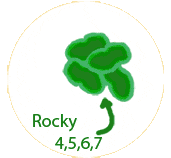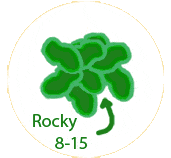A day in the life of a microbe
In most streams and rivers, enterococci are limited by temperature and nutrients, and they don’t grow much. Another way to say this is that for enterococci, nutrients and temperature are limiting factors. In order to test water quality by counting enterococci, we need to do two things:
- take away limiting factors for enterococci in our sample, and
- make sure that any other microbe that might be in the water still has limiting factors.
It’s important to keep (or even add) limiting factors for the other microbes, because otherwise we’ll be counting all sorts of bacteria in addition to enterococci, and our data won’t be valid. We do this by using a selective media – in other words, a gel-like food which is also laced with antibiotics and various other chemicals to limit all the other microbes. (One of the reasons that enterococci make such a good test case for contamination is that it is NOT affected by antibiotics which knock out most other microbes).
So, let’s watch a single enterococcus cell, who happens to be sitting next to a couple of staphylococcus cells. Because of the antibiotics, the staph cells will quickly get disabled, but not the enterococcus (let’s call him Rocky for short). In fact, after spending weeks in a (to him) cold and barren creek, Rocky is finally living the good life. He is surrounded by lactose sugar (yum!) and nice and warm.
Rocky pulls in sugar as fast as he can, and soon he’s grown out of his membrane. He splits in half, creating little Rockies 2 and 3. These two guys also pull in sugar as fast as they can, and xx minutes later, they too start to feel ready to split, so they do. Rockies 4, 5, 6 and 7 keep going.
time: 0 min |
time: 50 min |
time: 1 hr 40 min |
time: 2 hrs 40 min |
|---|
Of course, none of the Rockies has a way to move, so they’re stuck sitting in a little pile, but they don’t mind, because there’s plenty of sugar to go around. Pretty soon we have a pile consisting of Rockies 8 through 15. And so on.
Eventually (after about 24 hours) this pile will be big enough for one of us hulking human beings to see without even using a microscope. This tiny but visible pile is called a colony, and the original Rocky was the original colony-forming unit, or CFU.
Of course Rocky was probably not the only CFU around. Over on the other side of the gel Terry was sitting around, minding his own business, enjoying the warmth and sugar, and growing at the same rate. So while a few million descendants of Rocky formed a colony on one side of the plate, a few million descendants of Terry form a colony of the other side. And so on, one colony for each original colony forming unit.
Copyright University of Maryland, 2007
You may link to this site for educational purposes.
Please do not copy without permission
requests/questions/feedback email: mathbench@umd.edu